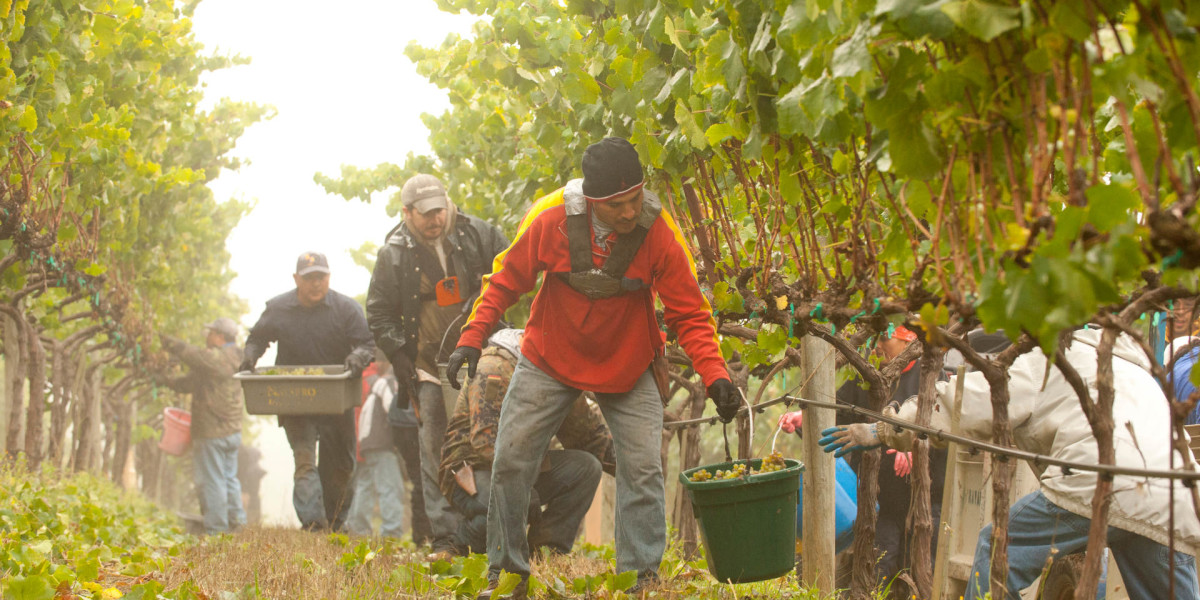
Gewurztraminer, Monsanto, and the lost dialect of Boontling
When it comes to California’s wine country, Napa and Sonoma often steal the limelight but venture a little further and you’ll find yourself in the rolling hills and unspoilt landscapes of Mendocino County’s idyllic Anderson Valley.
We caught up with Ted Bennett, founder of Navarro Vineyards, whose family has been producing wine in the Anderson Valley since 1974.
Thanks so much for taking the time to chat Ted, you must be busy with start of the harvest?
Well the hot spell in early August drove up the sugars in the grapes and I know some people have already started but the acids are still a problem. We’ve already harvested for some grape juice, which was 20 degrees Brix. We’re looking for between 20 and 22.5. The seeds are still a little green but if the weather holds, we’ll be starting in earnest next week.
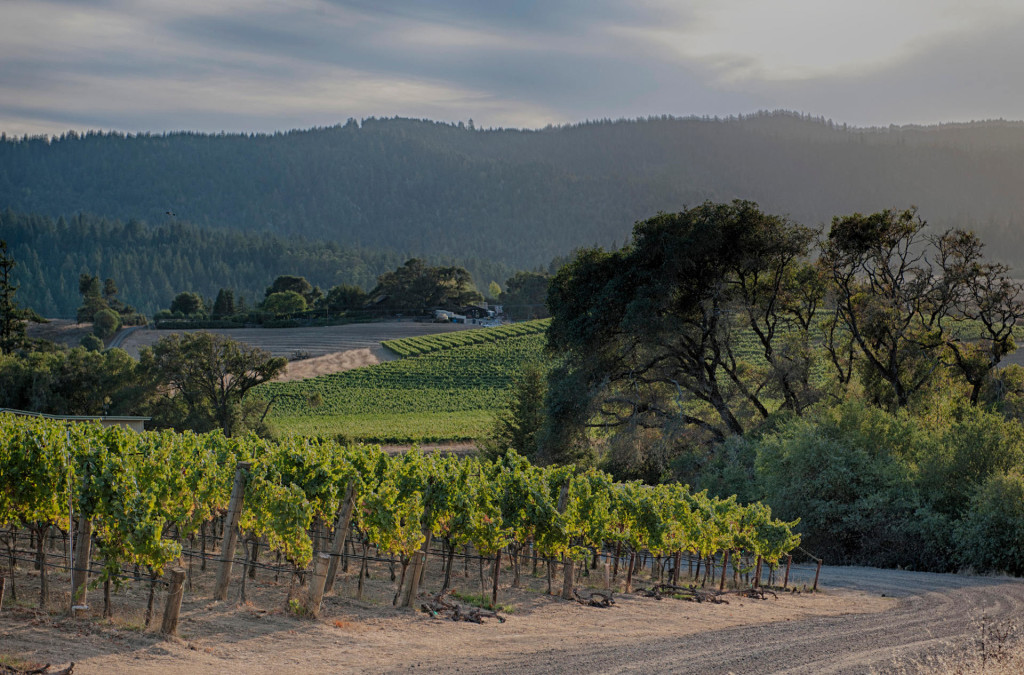
Lines of Gewurztraminer at Navarro Vineyard
Is this your favorite time of the year or do you prefer it when things quieten down?
One thing I have discovered in life is that I really enjoy crushing grapes. The whole process of using the crusher and stemmer, the smells, it’s hard not to be intoxicated by this time of the year. All of your hard work over the last twelve months is put into those casks.
How did you end up in the Anderson Valley?
Deborah and I were living in Berkeley in the late 60s and we’d got caught up in the food movement that was happening at the time. I’ve always loved the wines of Alsace, particularly Gewurztraminer, so we started looking for some land to buy. We went as far south as Santa Barbara, looked in the Santa Cruz mountains which we liked a lot but couldn’t find the right parcel, and also looked in Napa but soon gave that up. One October we ended up in Mendocino picking grapes in the rain across the road from what’s now Navarro Winery. The grapes had this beautiful russet color like they do in Alsace and tasted great. Several months later three parcels of an old sheep ranch came up for sale and that was that. We started by planting some Gewurztraminer as well as some Pinot Noir, which was the logical grape to grow alongside it.
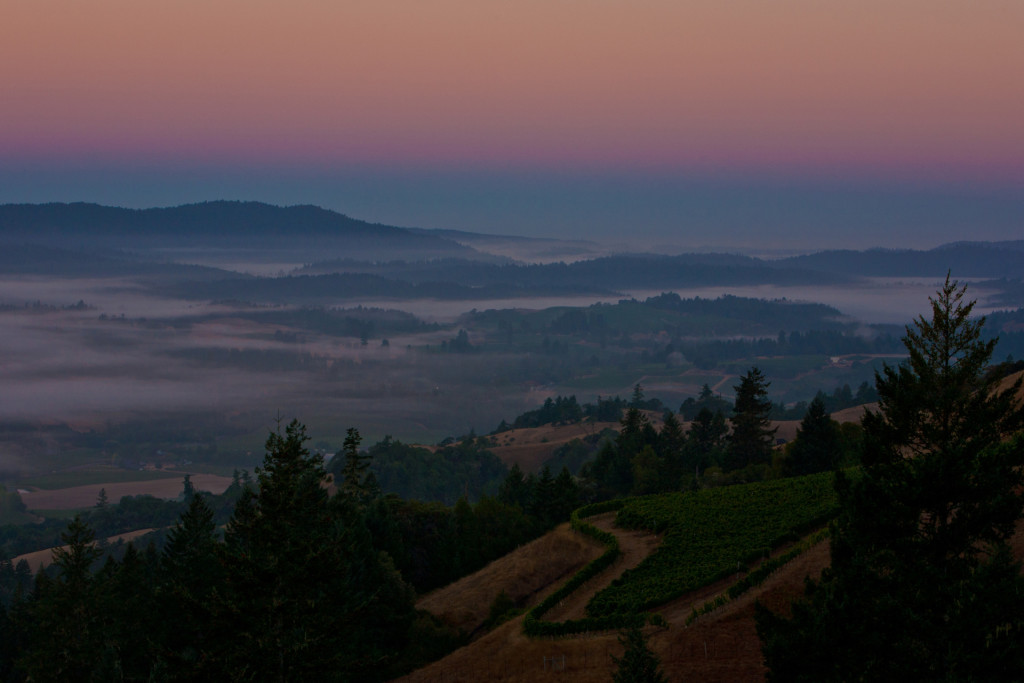
Fog sitting in the Anderson Valley at sunset
I imagine the valley was pretty different back then. Were there even any other wineries?
Not really. There were two small operations when we arrived. The earliest of the new wave was Donald Edmeades, a doctor from Southern California. He ripped up an old prune orchard and planted Cabernet Sauvignon and Colombard, a pretty strange combination I thought. The son took over and added a plot of Gewurztraminer. Up the street was us, back when Tony and Gretchen Husch were managing it. They had ten or so acres of Chardonnay and Pinot Noir. We arrived in ‘73, bought the ranch, and started to prepare the soil and build ponds. In ‘75 we planted the first sixteen acres of Gewurztraminer and five of Pinot Noir.
Driving through wine country it is clear that Mendocino has a distinct geography from Napa and even nearby Sonoma. How does this influence the wines from the Anderson Valley?
The valley is unique in that it is oriented to the northwest and this funnels the air off the Humboldt Current straight down the valley. We get a lot of fog in the morning and then cooling ocean breezes in the afternoon. It’s also a very narrow valley and this shortens the length of the days, particularly at the end of the season. It creates a situation where we have longer nights and therefore more time for the temperature to drop. We can have 15 degree swings everyday throughout the harvest. This stops the acidity from dropping out, so we have grapes with a high acidity but they are mature, perfect for the whites and sparkling wines we produce here.
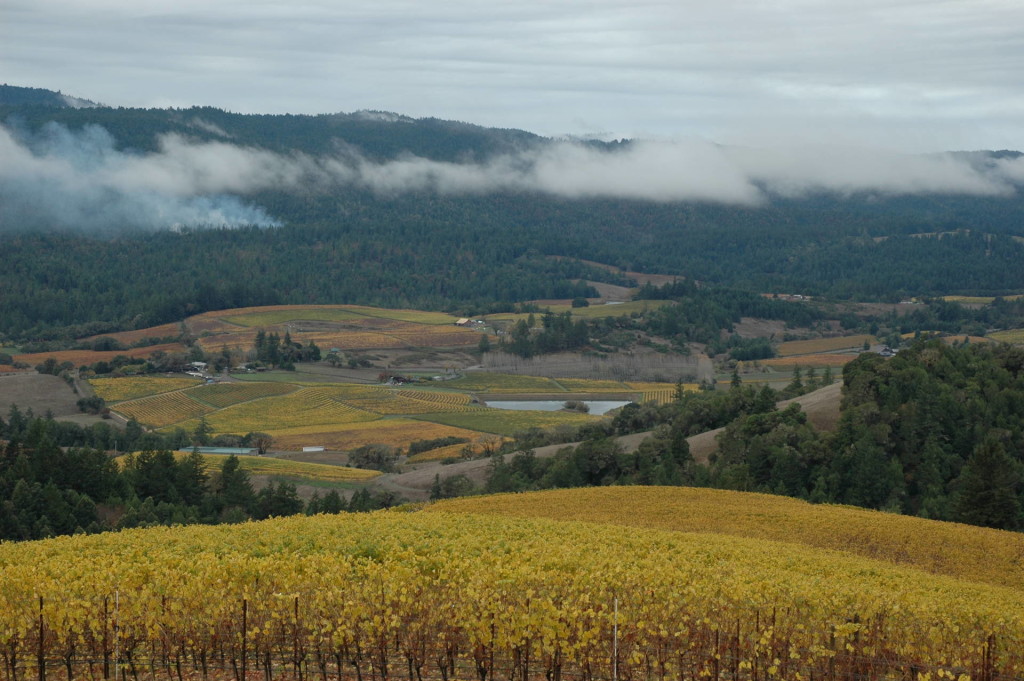
View of Anderson Valley from Middle Ridge Vineyard
It’s amazing how many factors are involved. Do you feel that you’ve at all mastered things after all these years?
Ha…I can tell you a story about mastering things! We got very interested in Pinot Noir in the 80s. We planted several different clones and after a decade of doing this we had a pretty good knowledge of which ones did best. We planted in rows of four, each block with a different clone, so it’s fairly easy to see the differences between them. At the time Phylloxera was threatening the valley, so we decided to move further up into the hills where it was cooler. We soon realized that while we thought we understood the clones, we didn’t know a thing about the different rootstocks. It turned out that the rootstock had much more of an impact on the flavor of the wine than the clone. Mother nature surprises you like that. It is so complex and we’ll never master it. That’s the beauty of it.
Most of our international clients and I’m sure a few U.S. travelers will have heard of Napa and Sonoma but probably not Mendocino and the Anderson Valley. Is that starting to change?
When we first moved here downtown Boonville was pretty much deserted and most of the young people were escaping to the city. Now people are moving back and the population of the valley has probably doubled in the last 20 to 30 years. But the reality of the Anderson Valley and Mendocino County as a whole is that people are, how shall I put it…independent. Most residents like it the way it is and are not that keen for it to change. There are still no large hotels or big home developments and it is beautiful because of that. We have an Anderson Valley Plan and part of it says that any farm under 160 acres can’t be sold and split up. In many ways the valley looks much like it did in 1974.
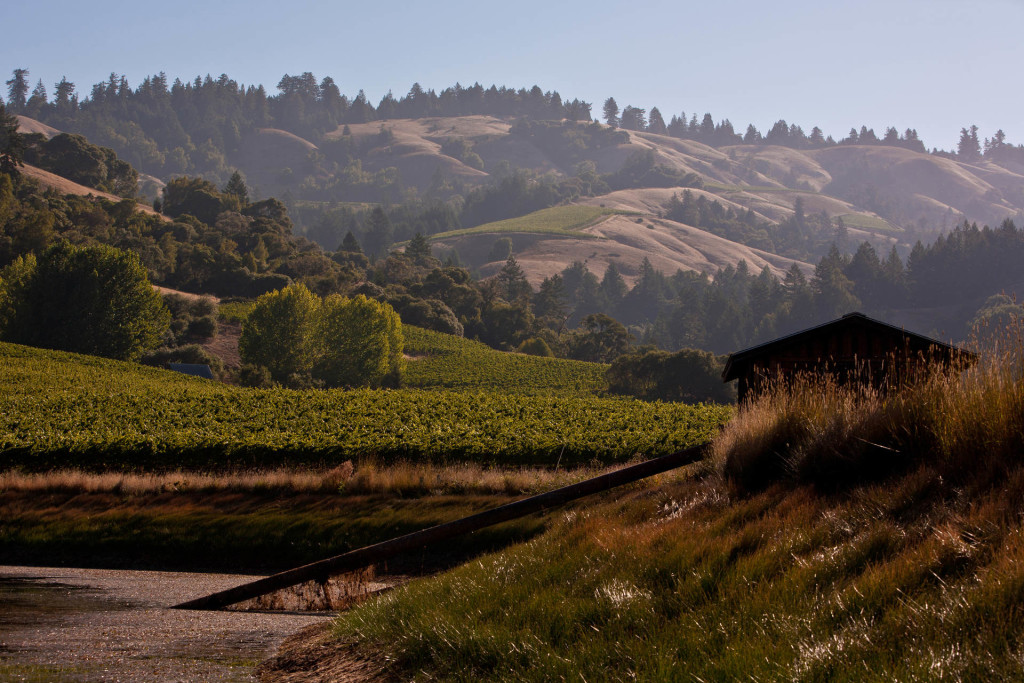
The pumphouse and pond at Navarro
I often associate Mendocino with a strong counter-culture or hippie movement, is that accurate?
Yes, it’s still very active. A great example was the GMO ban that was put on the ballot ten years ago. Monsanto spend $800,000 to defeat it, in a county of only 80,000 people. It passed by 60 to 40 with the support of what’s been called the hippie-redneck coalition.
(Mendocino was the first U.S. jurisdiction to ban GMOs)
Before I let you go, what lesser-known spots would you recommend people visit on their way through the valley?
Across the road from us is Hendy Woods, one of the last remaining stands of virgin redwood forest in Mendocino. If you thought Muir Woods was beautiful, these trees will blow your mind.
My daughter is also involved in an interesting project near Boonville, called Pennyroyal Farm. It is a sheep and goat creamery with vineyards as well. They take a totally biodynamic approach by using the animals to weed the vineyards and then fertilizing the crops with their waste. It’s solar run and zero waste. The animals make it a great option for families.
Boonville itself is an interesting place and home to its own dialect called Boontling. A few old timers still ‘harp’ Boontling, they all seem to hang out at the drive-in for whatever reason! Up until the 60s it was still taught as a second language in the local school. When we had telephone booths, they were known as a ‘Buckey Walter’. It’s a combination of Buckey (a nickel) and Walter, the first man to own a pay phone in the valley who charged everyone a nickel to use it.
(All Roads North works with the very best wineries, big and small, and has access to a range of accommodation options that allows us to craft a truly unique and tailored wine country experience. Get in touch to speak with one of our area specialists.)
